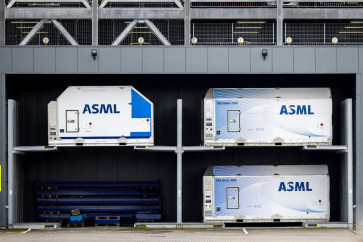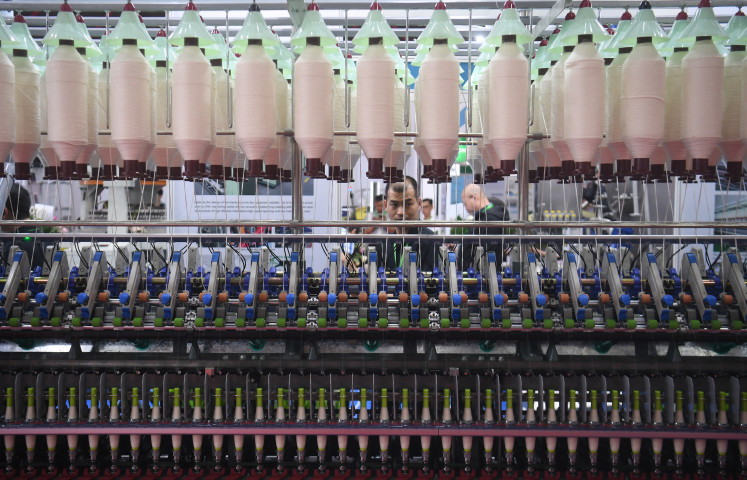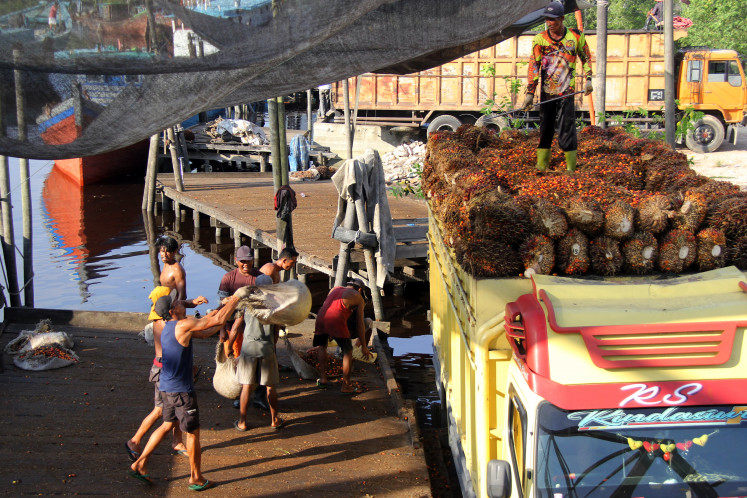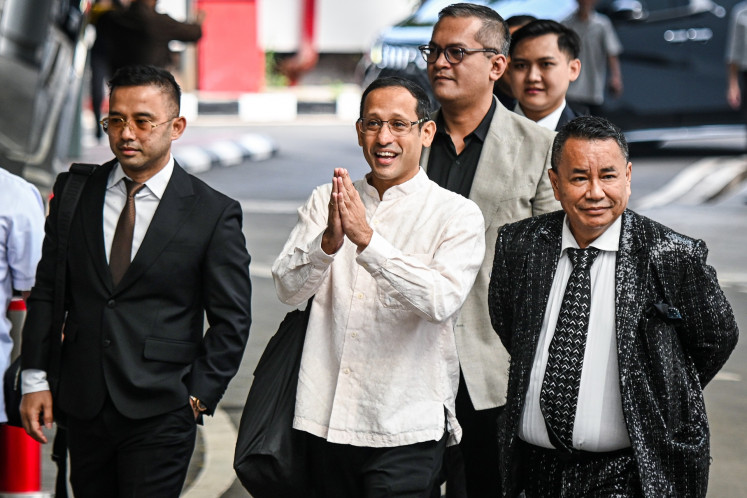Popular Reads
Top Results
Can't find what you're looking for?
View all search resultsPopular Reads
Top Results
Can't find what you're looking for?
View all search resultsOn your bike for health and wellness
Motorized vehicles shunted aside bicycles as a main means of transportation in the 20th century
Change text size
Gift Premium Articles
to Anyone
M
otorized vehicles shunted aside bicycles as a main means of transportation in the 20th century. Today, some urbanites in Jakarta — including private company officials and other businesspeople — are jumping on the bandwagon in reclaiming the bike for health reasons, and also as their contribution to fighting the city’s smog.
Decked out in helmets, face masks and gloves, they prefer it as their so-called alternative means of transportation. And these are no longer the single-gear bikes of old. With their bikes’ multiple gears and speed functions, cyclists have more options to hit the road. A multi-speed bike allow users to tackle any terrain, whether it’s a stretch of flat road, going downhill, uphill – and on the slalom course of the traffic-clogged streets of Jakarta.
Toto Sugiarto, the pioneer behind Bike to Work – an organization that promotes healthy living in the city by going to work by bike – said that he and his friends initially used their bikes simply for exercise and to have fun.
“In 2005, we agreed to use bikes as a means of transportation to the workplace at least once or twice a week,” said Toto, 48, who runs his own business in South Jakarta. “By riding a bike, we can at least participate in not increasing air pollution levels in Jakarta through not giving out emissions.”
Before moving to Tebet, South Jakarta, he lived in Cibubur, Bogor, about 34 kilometers from the city. He biked to his office in Pancoran, South Jakarta, almost every day.
“It took me about two hours to reach my office. This lasted for two years, from 2005 until 2007. And I still go to my office and everywhere in the city by bike.”
From its beginnings with about 150 members, today Bike to Work has 6,000 members, several of whom are private company executives.
“Most of them go to their workplace by bike at least twice a week in accordance with our agreed campaign. About 10 percent of the members go to their workplace by bike on a daily basis,” he said.
Obstacle course
But it’s not easy riding a bike in the city. Cyclists say one of the biggest challenges is the absence of special bike lanes, which means they must vie for space with cars and motorbikes.
“We frequently find that a minibus or a minivan makes a sudden stop in front of us, which is really annoying. But we have to remain calm and learn how to be patient in facing such situations,” he said, blaming a lack of discipline among road users for the chaotic traffic conditions.
Cyclists were delighted after the designation of a two-km bike lane connecting Ayodya Park to Blok M Terminal in South Jakarta in 2009, following a meeting with Jakarta Governor Fauzi Bowo.
“However, the bike lane can no longer be used as expected. Most of the lane has returned to its original function as a parking lot for motorized vehicles, and part of it is occupied by sidewalk vendors,” he said. “The authorities are inconsistent in their supervision.”
Traffic snarls are another headache. “We have to lift up our bike and walk to a sidewalk nearby but it turns out that motorcycles have also taken over the sidewalks,” he said.
The obstacles are no deterrent to the bikers.
“Cycling is a health investment. I mean, by cycling every day to my office and joining various bike-related events, I can maintain my health and well-being and this means that I save money on medical treatments,” said Purwoko, or Ipung, one of the initiators of the Kompas-Gramedia Cyclists group that currently has 200 members.
Riding high
Ipung, who started biking to work 10 years ago, lives in Lenteng Agung, South Jakarta, about 20 km from his office in Palmerah, Central Jakarta. It takes him about 50 minutes to reach his workplace.
The 53-year-old disagreed with the view that biking to work would make employees tired and unable to focus on their office tasks.
“For me, cycling can keep me awake because during a ride on my bike, I have to keep alert and focused on the traffic. And this keeps my spirit up,” said Ipung, business manager at Kompas daily.
Ipung said biking was his contribution to curbing air pollution. “Riding a bike doesn’t let out any harmful chemicals in the air.”
So what about the cost?
Modern bikes and their spare parts and accessories, mostly imported, are easily available at bike showrooms in town. Prices vary greatly. A regular road bike, meeting individual cycling comforts and needs, carries a price tag from Rp 5 million to Rp 6 million.
Other models cost Rp 50 million, comparable to the price of three motorcycles, and some can reach up to Rp 100 million in price.
For the bikers, cost is one consideration, but more important still is being part of a healthy living, environmentally conscious trend. As Jakarta residents, they are simply “nggowes”, the word to pedal or ride a bike in the language of Jakarta’s indigenous Betawi people.
Nggowes to work, anyone?










